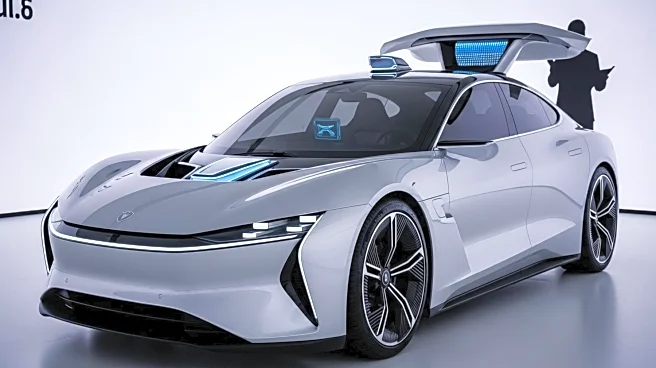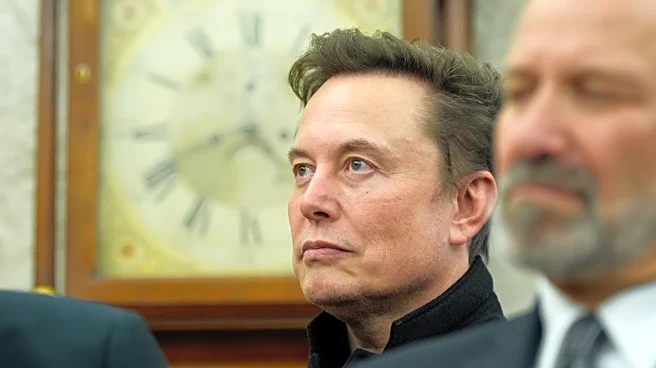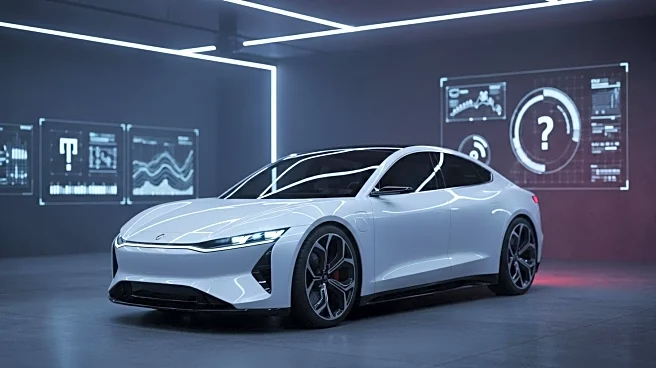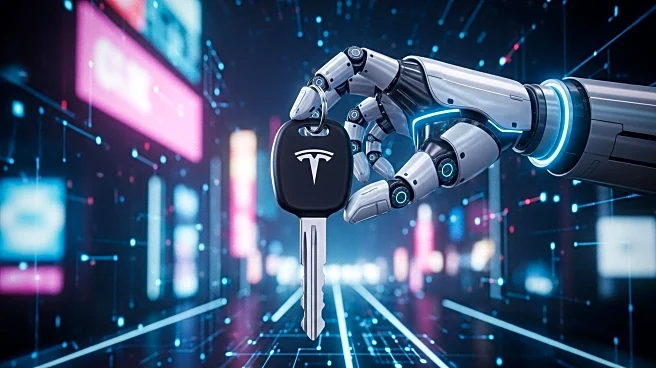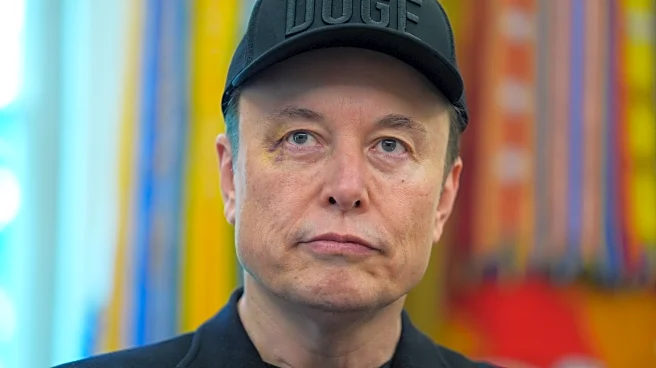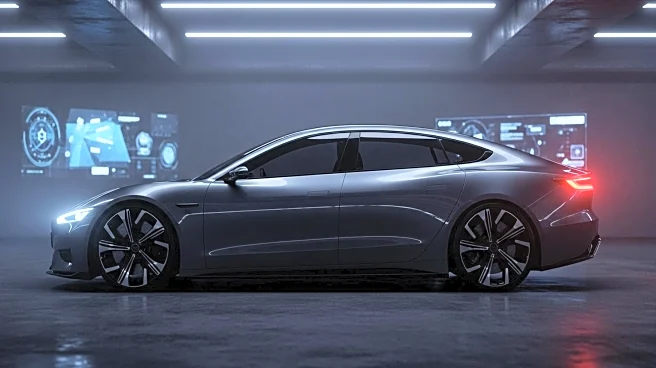What is the story about?
What's Happening?
Tesla has proposed a new $1 trillion compensation package for CEO Elon Musk, which includes revised production goals. The company has scaled back its ambitious target of producing 20 million electric vehicles annually by 2030 to a total of 20 million by 2035. This adjustment comes as Tesla's sales growth has stalled, leading to the abandonment of previous expansion plans, including a halted factory project in Mexico. The compensation package, which still requires shareholder approval, also includes goals for one million robotaxis and one million humanoid robots, known as Optimus, by 2035. These targets reflect a shift from Musk's earlier promises of rapid growth and technological advancements.
Why It's Important?
The revised goals and compensation package highlight Tesla's strategic pivot in response to market realities. By lowering production targets, Tesla acknowledges the challenges in sustaining its previous growth trajectory. This move could impact investor confidence and market valuation, as the company adjusts its expectations. The focus on robotaxis and humanoid robots indicates a diversification strategy, potentially opening new revenue streams. However, achieving these goals will require significant technological advancements and regulatory approvals. The outcome of the shareholder vote on Musk's compensation will be a key indicator of investor sentiment towards Tesla's future direction.
What's Next?
Tesla's shareholders are set to vote on the proposed compensation package in November. If approved, the company will need to navigate the complexities of scaling production and developing new technologies to meet its revised goals. Stakeholders, including investors and industry analysts, will closely monitor Tesla's progress and any further strategic adjustments. The company's ability to deliver on its promises will be critical in maintaining its market position and achieving long-term growth.
AI Generated Content
Do you find this article useful?
